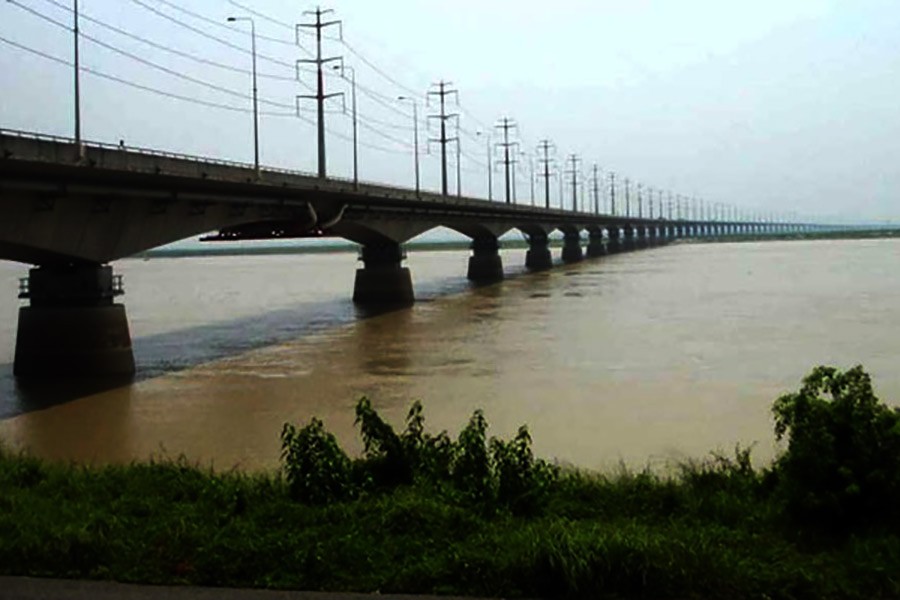The government, following a tunnel under Karnaphuli river, is now working on a plan to construct a tunnel under the mighty Jamuna river.
The plan has been chalked out with an aim to facilitate improved road and rail communications in the country's northern and greater Mymensingh regions.
The Ministry of Road Transport and Bridges will implement a project to this end for introducing the Multi Modal Tunnel under the Jamuna after conducting a feasibility study.
Under the proposed tunnel, simultaneous train and road communications are expected to be introduced for the first time in the country, said an official at the Planning Commission.
The official said the Bridges Division has already sent a draft development project proposal to the Planning Commission titled 'Conducting feasibility study beneath the River Jamuna'.
The Bridges Division will conduct the feasibility study by December 2018.
Once the tunnel is constructed, the official said improved communication would be established between Rangpur Division and northern part of Dhaka Division, greater Mymensingh and other parts of the country.
Another official at the Bridges Division said initially Balashighat (Gaibandha) and Dewanganjghat (Jamalpur) have been selected as the potential sites for building the tunnel. But, the real location of the proposed tunnel will be finalised on completion of the study.
The official said the width of the Jamuna River could stretch up to 13 kilometres during the rainy season where 19,500 cubic metres of water are transmitted through this river every second alongside 650 million tonnes of silt.
In terms of transmission of silt, Jamuna is the second biggest river in the world while it is the fifth largest in the world in terms of water transmission. "Considering the trend of siltation, it's better to construct there tunnel instead of Bridge," the official added.
The official said the proposed tunnel project is included in the joint communique issued between Bangladesh and Japan during the visit of Prime Minister Sheikh Hasina to Japan in May 2014.
According to a UNB report, the Bridges Division official said technical assistance has already been sought from the World Bank, JICA and IDB for conducting the feasibility study for implementing the tunnel project.
Besides, Prime Minister Sheikh Hasina during her visit to the then Ministry of Communications on July 6, 2014 directed it to construct the tunnel (Road and Rail) on Balashighat and Dewanganjghat sites.
The major operations under the feasibility study project include selecting the location of the proposed tunnel alongside determining its length and alignment, selecting its construction method including various subcomponents of the project, conducting geotechnical investigation, seismic study and survey and traffic survey, conducting environment and rehabilitation-related study and thus formulating a plan, framing initial design and based on this making the final estimation, formulating land acquisition plan and making economic and financial analysis, formulating procurement, operations and maintenance plan, identifying risk evaluation and reduction system.
Once the tunnel is built, improved rail and road communications will be established among 13 districts of northern region, including Rajshahi, Rangpur, Dinajpur, Gaibandha, Bogra, Nilphamari and Thakurgaon and greater Mymensingh.
Passenger vehicles and train services will be introduced through the tunnel which will facilitate travel of thousands of passengers as well as transportation of notable number of goods-laden vehicles every day.
Another senior official at the Bridges Division said the tunnel will reduce the pressure on the Bangabandhu Bridge and thus ensure fast road and rail communications.
Earlier in November 2015, the Executive Committee of the National Economic Council (ECNEC) approved the much-hyped multilane road tunnel project under the Karnaphuli River involving Tk 8,446.64 crore with Chinese assistance.


